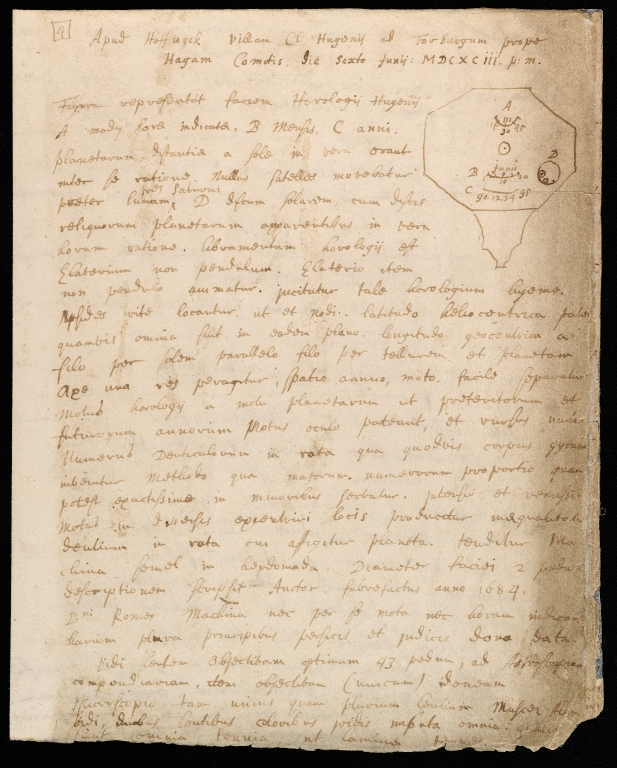Mathematics
Found in 212 Collections and/or Records:
Notata phys: et math: London ..., 1698-1705
Almost certainly a latter part of Gregory's item 80: 'Notata Phys: et Math: D.G. Lond: 25 June &c 1698'. This covers cone sections, elements of Euclid, errata in a Halley treatment of comets in his own Apollonius project, and a jotting on Scottish history bibliography.
Notes on priority, 1707
This small slip bears what appears to be ammunition in Gregory's defence of his uncle James Gregorie against old charges of plagiarism. The confusing reference to "Actis Phil. Septemb. & Decemb. 1797" is a slip of the pen. The material appeared in the Acta of 1707.
Nova Methodus Tangentes Curvarum ... per D.T., s.d.
An undated treatment of tangents by 'D.T.', in the same hand as item 91.
Observ: Eclipsos Lunaris Oxon 19 Octr 1697 et [Mercury] in [the Sun] 24 Oct 1697, October 1697, with 2 apparently attached documents from 17041693

Observata et dicta apud D. Hugenium, 06 June 1693
Notes of a conversation in Holland with Christian Huygens, concerning an 'horologium' to show hours, months, years, and planetary positions. More general mention of the work of numerous other scientists: Notably, Huygens disputes the notion of John Bernoulli (James Bernoulli's younger brother) that the curve of an inflated sail is part-catenary and part-circle, and warns that Newton ought not to be 'deflected' into theology or chemistry.
Or Ms 26: مفتاح الحساب Miftāḥ al-ḥussāb, 1092 A.H., 1681 C.E.
Or Ms 27: تحریر اقلیدس Taḥrīr Uqlīdus, 882 A.H. and 982 A.H., 1477 C.E. and 1573 C.E.
Or Ms 28: مخروطاط ابلونیوس Makhrūṭāṭ Iblawniyūs, early 12th cent. A.H. at latest, early 18th cent. C.E. at latest
Or Ms 92: رسالهٔ ارثماطیقی (یعنی خواص اعداد) Risālah-i irs̲māṭīqī (ya'nī khavāṣ-i a'dād), undated
This is only the third fann, or part, of apparently a large work on arithmetic. The author's name is not given. In its present form it treats with that branch of the Theory of Numbers which is called Zawju al-Zawj), it is illustrated by numerous tables.
Or Ms 259: رساله درعلمِ وفق Risālah dar ‘ilm-i vafq, undated
This is the fourth maqālah (chapter) from a longer work on the theory of numbers in five chapters (see A Descriptive Catalogue of the Arabic and Persian Manuscripts in Edinburgh University Library by Mohammad Hukk et al. (1925) for further details.
This manuscript includes many tables.

